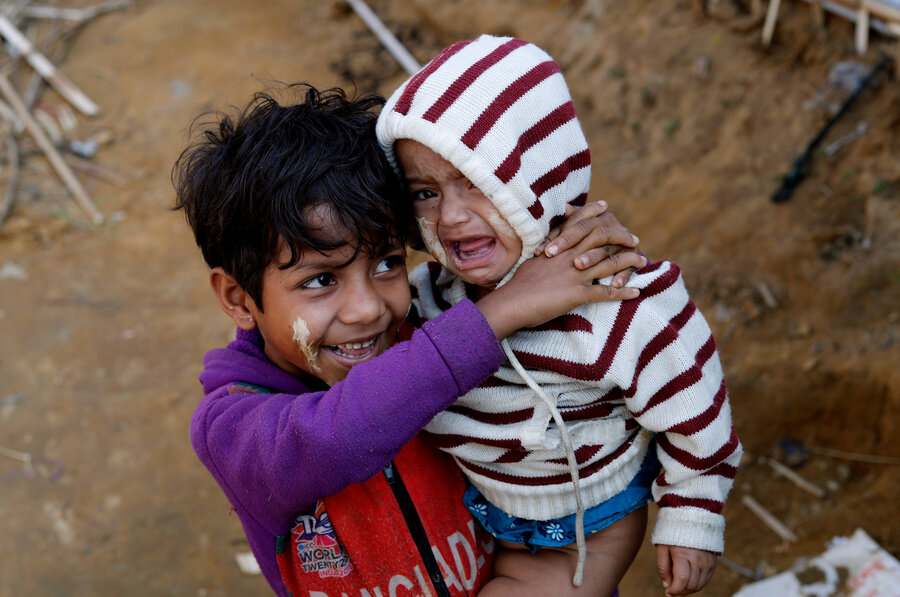When families flee will the US open its arms?
Loading...
Rita Joy Osazee, a refugee who fled from Nigeria, is training to work in an elder care facility in Budapest, Hungary. “It is not easy to be old,” she says. “I feel a strong desire to take care of the elderly. I don’t know why but I just love them.”
Iman Khatibe escaped the brutal civil war in Syria and has found a new home in Frankfurt, Germany, as a seamstress. She learned her skills from her mother, aunt, and uncle; now she designs and makes garments from evening dresses to wedding gowns, decorated with her own intricate embroidery. “I don’t copy what I see on the street,” she says. “My inspiration comes from inside.”
The United Nations High Commissioner for Refugees (UNHCR) collects and tells stories such as these to help remove stereotypes about who refugees are. Each individual has a unique situation; what they share are lives that, through no fault of their own, have been severely disrupted.
The UNHCR calculates that worldwide 22.5 million refugees have fled their homelands based on well-founded fears of persecution because of their religion, nationality, race, or politics. If a broader definition is used that includes people displaced within their own countries, the figure rises to 65.6 million – the highest number since the massive refugee crisis that sprang from World War II more than 70 years ago.
Today, while record numbers need help, the United States has set a record of its own: In 2017 the US accepted the fewest number of refugees, just 29,022, since at least 2002, the year after the 9/11 terrorist attacks.
The US took in 84,995 refugees in the last fiscal year of the Obama administration that ended in September 2016. In 1980 the Reagan administration took in more than 200,000 refugees. The Trump administration has set a limit of 45,000 admissions for 2018.
The seesaw political arguments over the benefits and dangers of immigration are well known. This much certainly can be said: Throughout American history immigrants have been the engine of growth and prosperity. And given today’s low unemployment many areas of the country face worker shortages that immigrants could fill.
Refugees, however, represent a special – and tiny – part of the immigrant story (about 1 million legal immigrants are added to the US population each year). In many cases refugees literally have fled for their lives. Nations that take them in make a statement about their moral commitment to help those in clear and urgent need.
In his recent Christmas message Pope Francis compared the plight of refugee children to Jesus, who after his birth was forced to flee Bethlehem with his parents, crossing into neighboring Egypt to escape harm.
“We see Jesus in the many children forced to leave their countries to travel alone in inhuman conditions and who become an easy target for human traffickers,” he said. “Through their eyes we see the drama of all those forced to emigrate and risk their lives to face exhausting journeys....”
In guiding US policy, fears that refugees bring with them crime, or even terrorism, or that they will put severe or unfair demands on social services, need to be weighed against the enduring American spirit of compassion for others.







